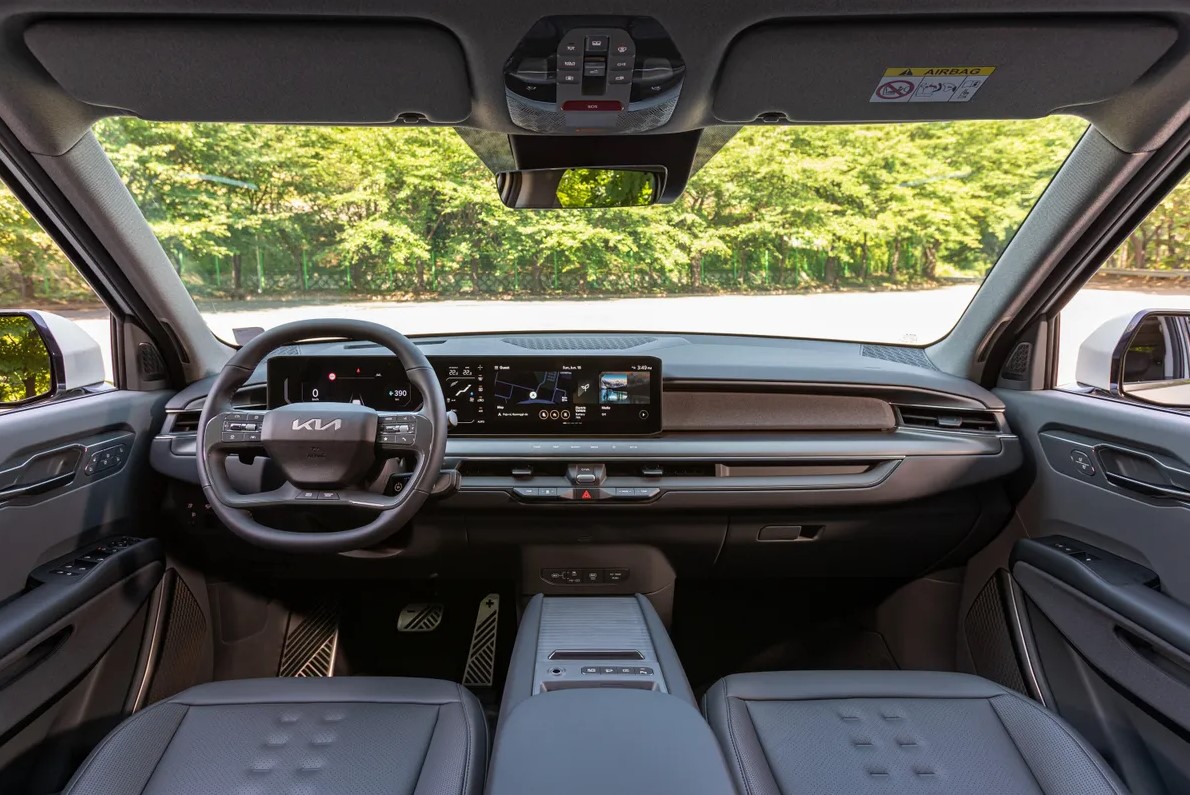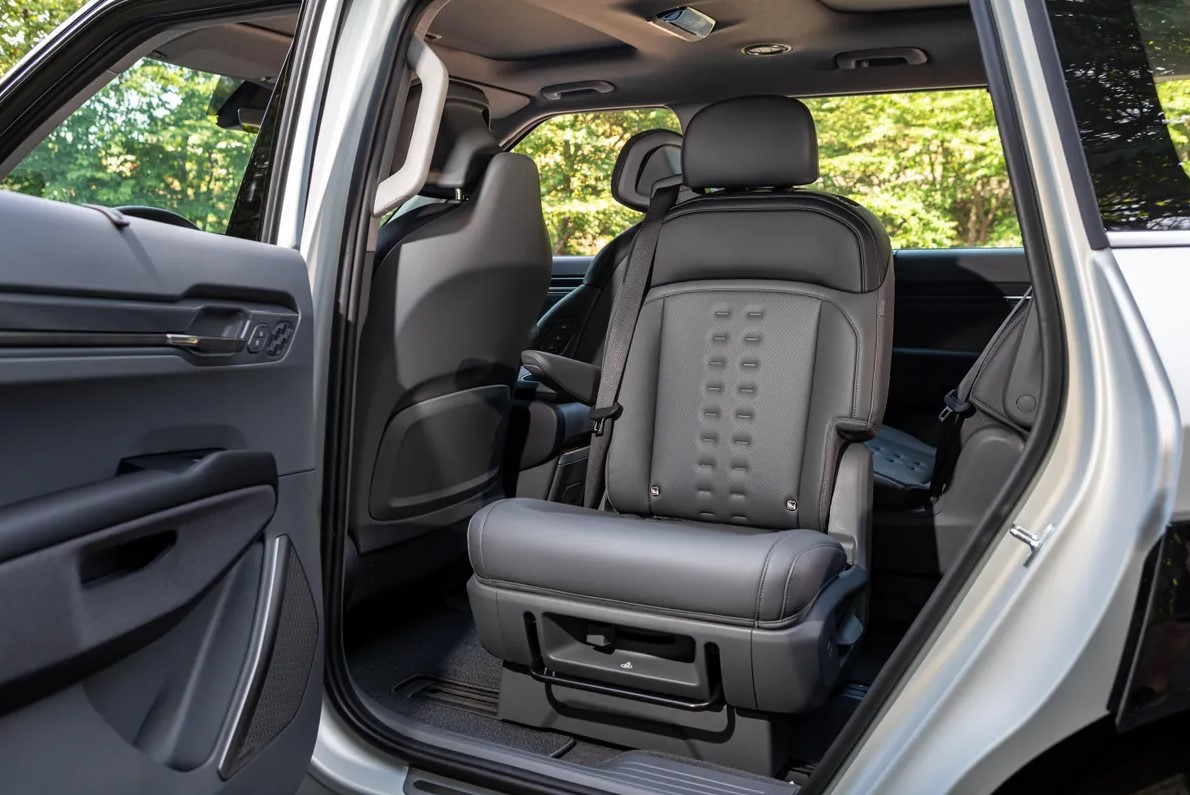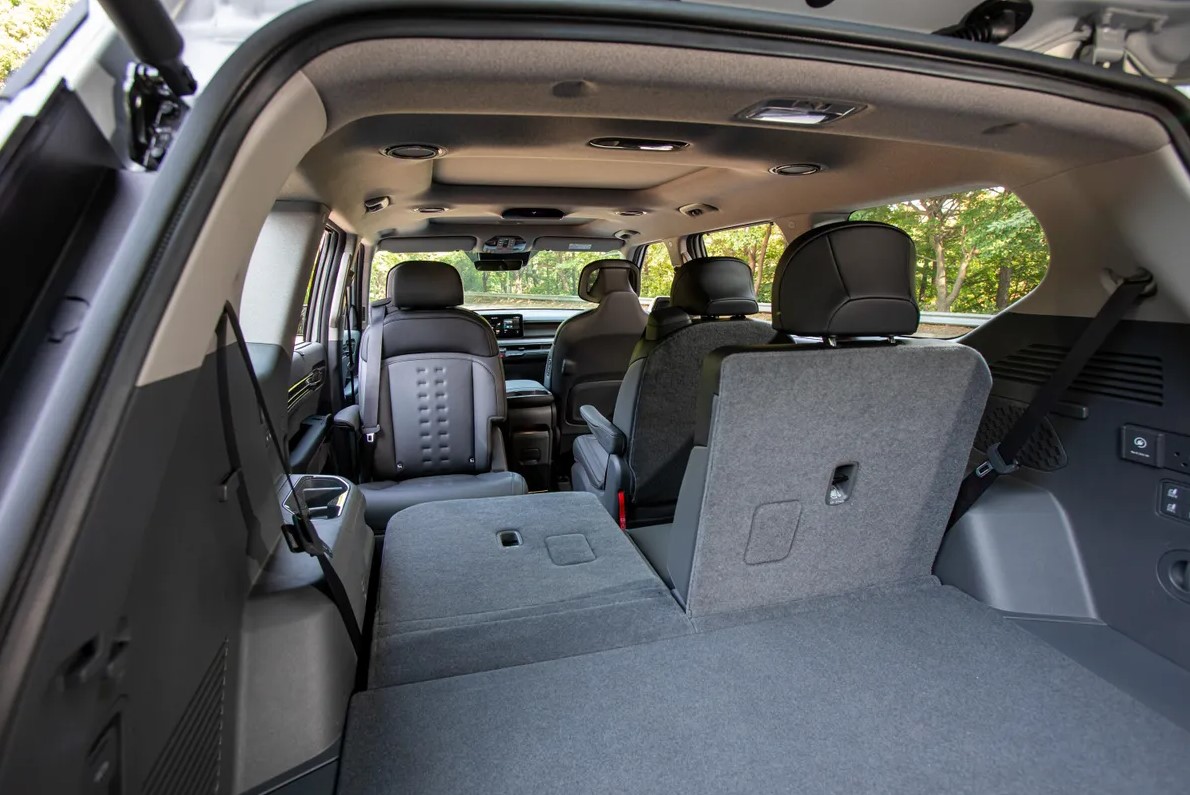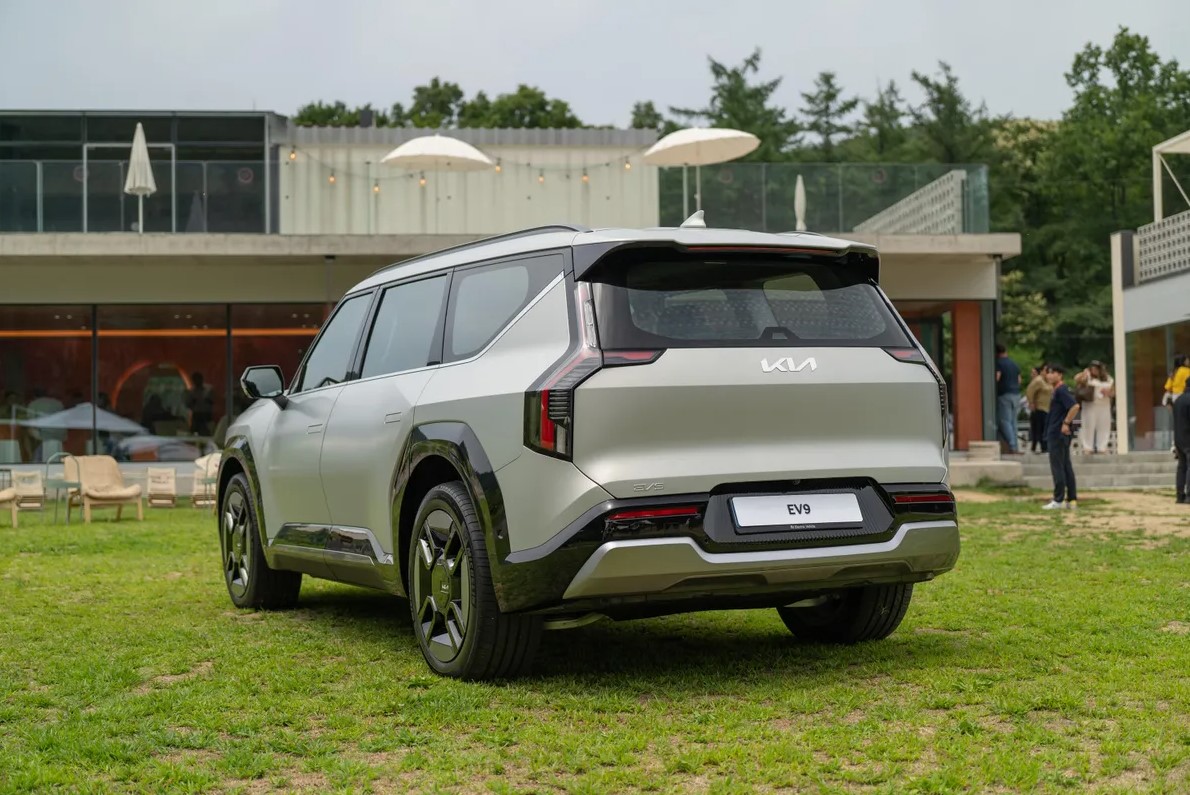The success of Kia’s second battery-electric car seemed all but assured. The Kia EV9, which combines the greatest features of the wildly popular three-row Telluride with the foundations of one of our favorite electric vehicles.
The EV6 crossover, makes its debut on US roads at a time when SUVs are becoming increasingly popular and EV adoption is rapidly accelerating. To test this hypothesis, I drove a fully equipped 2026 Kia EV9 GT-Line. 2026 Kia EV9 Redesign
2026 Kia EV9 Redesign and Update Plan
Exterior & Interior
Much of the technology in the EV9’s dashboard, safety suite, and engine is known, and the overall design concepts are similar to those of its smaller stablemate, the EV6, which is based on Hyundai Motor Group’s E-GMP electric vehicle platform.
Nevertheless, the EV9 offers more than just a “super size me”; it also debuts new infotainment software and user interface updates, thoughtful SUV-focused features, and a new “software-driven” approach to features that, for better or worse, give owners more options to personalize the appearance and functionality of their EV at the touch of a button.
With a compact 5-inch monochrome segment display that provides at-a-glance climate control information, the EV9’s monolithic triple-display infotainment suite, located forward of the driver’s seat, expands upon the manufacturer’s well-established dual-12.3-inch screens.
With yet another software update, Kia has given the EV9 driver a new, more customized home screen that uses shortcuts and widgets that may be customized to provide more information quickly. Along with enhanced over-the-air update capabilities, the new system is compatible with Apple CarPlay, Android Auto, and Digital Keys for specific iPhone and Android devices.
Map, Audio Source, and other haptic capacitive touch shortcut keys look to blend into the dashboard surface below; in my sample, this is done in wood veneer. This is visually appealing, but it can be challenging to press precisely from the driver’s seat.
In terms of functionality, I’m happy that these shortcuts are now entirely distinct from the actual buttons below that regulate the temperature and fan speed. All things considered, the dashboard appears to be a more structured version of EV6’s already outstanding concept.
The EV9 switches between drive, park, and reverse using a stalk shift knob that looks a lot like the Hyundai Ioniq 5 and is affixed to the steering column. You’ll also see that this dongle incorporates the start button if you pay close attention. This small space-saving feature makes room on the center console for extra forward-facing cupholders and storage, which is excellent.
The positioning of the drive and terrain mode buttons on the EV9’s four-spoke steering wheel is another ergonomic flaw, if I may choose. I had a harder time reaching them without clumsily twisting my wrist because they were tucked deep under the central hub. The large, handy drive mode button on the EV6 that is easily accessible with the thumb at the eight o’clock position is what I much like.
To Kia’s credit, the center location is harder to bump against when shuffle-steering, and the typical EV9 driver with a family-packed SUV is unlikely to switch between driving modes as frequently as I do. However, as a driver who likes to double tap into Sport mode for a fast pass, I wish there was a compromise.
Similar to the similarly big Telluride, the EV9 may also be equipped with a digital display rearview mirror, which significantly improves sight, particularly when the rear window is obscured by tall goods or the heads of passengers. 2026 Kia EV9 Redesign
2026 Kia EV9 Specs
Engine & Performance
There are three electric powertrain options for the EV9. Beginning with a 160-kilowatt motor that generates 215 horsepower and 258 pound-feet of torque to drive the rear wheels, the Light RWD model is equipped with a 76.1-kilowatt-hour battery. A bigger 99.8-kWh battery is replaced by the Long Range pack, which is standard for Wind, Land, and GT-Line vehicles and optional for Light trim levels.
Unless owners choose a “Feature on Demand” software update that increases output to 516 lb-ft, the top three trim levels also get an upgrade to standard dual-motor all-wheel drive, boosting to 379 horsepower and 443 lb-ft. Although a complimentary performance trial is offered at the time of purchase, owners will need to pay $900 upfront using the Kia Connect app in order to maintain the enhanced output for the duration of the car’s life.
This is strange because it could indicate that your test drive and ownership experiences are not the same. Additionally, it seems like yet another reversal of course when it comes to purchasing hardware with features and performance that manufacturers restrict to post-purchase software locks or subscriptions.
However, I also believe that most drivers won’t require the additional pound-feet and may save money by just choosing not to participate. The performance boost is standard on the top-spec GT-Line model and doesn’t need to be purchased separately. 2026 Kia EV9 Redesign
2026 Kia EV9 Fuel Economy
Getting my GT-Line example off the line in Sport mode reduces the EV range a little, but it rewards with an outstanding 0–60 mph sprint in around 5 seconds. However, I was more intrigued in the EPA estimations of up to 2.38 miles per kilowatt-hour (about 80 mpg equivalent) for this specification. During my testing week, I drove mostly in Eco mode and at lower, urban speeds, averaging an even 3.0 mi/kWh. On the EPA cycle, the most efficient EV9 Light RWD trim increases to 2.63 mi/kWh or 89 mpge.
Additionally, according to EPA estimations, the EV9 Light with a single motor would go 230 miles on a single charge when using a standard range battery or 304 miles when using a long range pack. The heaviest, most feature-rich GT-Line drops to 270 miles between charges, while dual motor variants drop to 280 miles. We’re not sure how choosing the Feature on Demand performance would impact range, but in my opinion, it shouldn’t unless you have a lead foot.
For optimum performance and charging speed in a range of conditions, both battery packs feature heat pump thermal conditioning and Kia’s fourth-generation chemistry. This increases battery longevity and helps preserve range on very hot or cold days. Battery preconditioning also involves thermal management to make sure the battery approaches its ideal 230 kW DC fast charging rate and has a strong enough 800-volt station. In around twenty-five minutes, it should be sufficient to fill the large battery pack from ten to eighty percent.
Dual-motor EV9 examples also claim a towing capacity of up to 5,000 pounds when a towing kit is added, but Kia cautions that this might “significantly reduce electric range.” However, this is true when using any EV for towing.
The EV9, like its E-GMP-based family members, can power gadgets or appliances using its onboard inverter and vehicle-to-load via an adaptor. By using this bidirectional power technology, the owner may turn the J1772 charging input into a NEMA 5-15 AC output. Then, as long as they don’t use more than the maximum draw of 1.8 kW, they can connect any AC-powered appliance or gadget into this standard household outlet.
When combined with the EV9’s large 99.8-kWh battery pack, which can power a refrigerator or chest freezer for an entire week, this feature becomes even more adaptable. It could prevent a significant amount of food from spoiling during a prolonged outage without significantly reducing range during shorter ones. After a day of tailgating or powering a campground, the EV9’s dashboard software lets users set battery capacity reserve limits in 10% increments and activate or disable V2L, ensuring you have enough range to drive home or to a charger.
Additionally, the EV9 has seven high-speed USB type-C outlets throughout the cabin to charge portable electronics like laptops, tablets, and gaming consoles, a second 1,800-watt V2L outlet in the rear luggage area, and a smaller, low-power AC inverter in the center console.
Additionally, the EV9 will debut vehicle-to-grid functionality in some regions. Owners will configure and control this technology using the Kia Connect app store, although it’s still “coming soon.” Although it doesn’t have enough continuous electricity to power your entire house like, say, Ford or Chevy’s vehicle to home installations or permanent battery installation might, its present 1,800 watt V2L limit still makes it quite helpful.
2026 Kia EV9 Release Date & Price
The entry-level Light RWD with the regular range battery of the 2026 Kia EV9 starts at $56,395, but if you want the increased range and efficiency of the larger battery, I’d suggest looking into the $60,695 Light Long Range RWD.
The EV9 Wind AWD ($65,395) is the true sweet spot in the lineup, bringing a few nice-to-have safety features and upgrades along for the ride. At this trim, the EV9 is well-equipped enough that I think most frugal drivers would be more than satisfied — and if this were the EV6 or Ioniq 5, I’d say stop here. The Kia EV9’s $1,495 destination fee is included in all pricing.
Our GT-Line tester came with a sticker for $76,245 when it was fully loaded and painted with $695 Ocean Blue Gloss. This is much more expensive than a Telluride with similar equipment that runs on gasoline, but it is also significantly less expensive than its fully electric three-row competitors, the Tesla Model X and Rivian R1S.
The lease loophole is now the only option to receive the full $7,500 tax credit, but if you are patient and would rather buy, you may be able to save money on the EV9 by waiting a little while. The electric SUV may qualify for the EV tax credit by 2025 as the manufacturer recently shifted production and assembly to its West Point, Georgia facility.
Note: The details included in this blog post are derived from pre-release material that was accessible when the article was written. If you want the latest information, you should check official sources or call your nearest dealership.
Read Also:
- 2026 Kia Optima Price, Specs, Interior
- 2026 Kia Stonic Specs, Price, Dimensions
- 2026 Kia Picanto Specs, Redesign, Release Date
- 2026 Kia Soul Price, Specs, Review
- 2026 Kia Telluride Review, Price, Release Date




